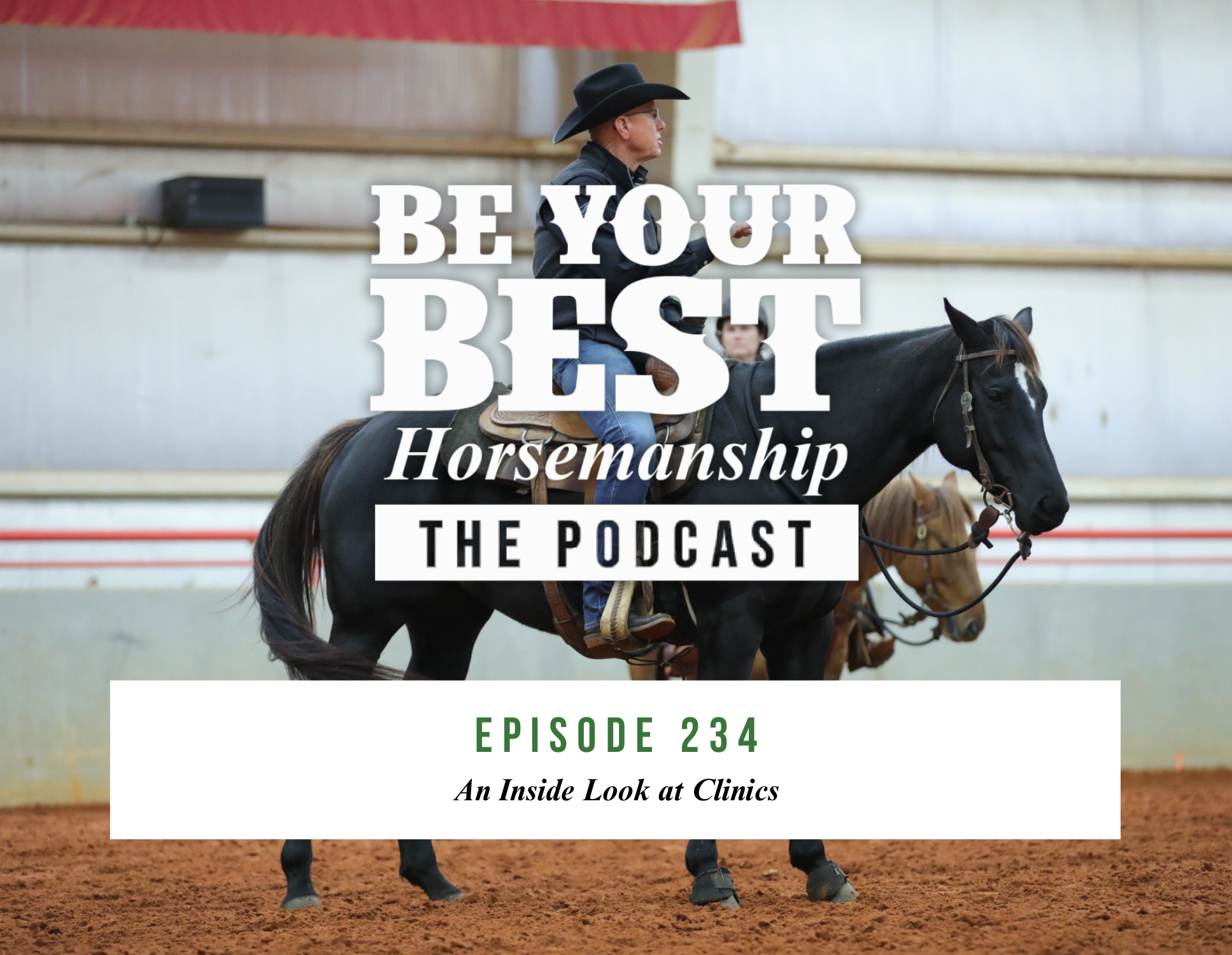Ep 218: Freeing Up a Horse’s Front End
In this episode, I'm talking more about the importance of keeping the horse's front end freed up and sharing some experiences of working on this skill with a filly we currently have in training. Our Slick by Design filly that we call “Hadley” has been coming along really nice in her training this year. We plan to offer her in the Ruby Buckle sale this year, so fine tuning her skills and foundation is going to be a big focus for us this year.
Working with a Dominant-Minded Horse
From the start, she has had an alpha personality and has been more of a dominant filly. I actually prefer a horse with this temperament because, down the road, her natural personality can work to your advantage – she’ll be very gritty, and once she figures out what the job is, she will do it very well. However, until we get there, we’ve been working on overcoming a few challenges with her getting pushy in the bridle and heavy in my hands.
What It Means to Have a Front-End Loaded Horse
When a horse is heavy in your hands, this means they are usually front-end loaded. I’ve talked about horses being front-end loaded a lot on this podcast, but if this is your first time listening, all this means is that they have more weight distributed on their front end. When this happens, it can be harder to achieve those quick, fluid movements that we are aiming for in a stop and turn.
What Happens When a Horse Anticipates Your Next Move
I’ve been working this filly through a few drills to help her overcome the front-end loaded issue, and as she is learning, she has gotten to the point where she is beginning to anticipate what I am asking. A horse anticipating the next move can be a positive sign, but it can also work against you in the long run. On the one hand, when a horse is slightly anticipating the next move, it means they are trying to be very in tune to your feel. They are learning and using the “thinking” side of their brain to try to figure out what you want them to do next. But, if a horse starts making that change in speed or direction before you ask, they can begin to get sticky or strong in the bridle.
Establishing Feel and Recognizing the Signal Before the Signal
The sweet spot with building this filly’s foundation will be when she learns to recognize the signal before the signal – those subtle cues that I send with my body to help her develop a better feel for what I am about to ask her to do. In my opinion, horses with the best foundation have learned how to read your body first and your hands second. This is where the importance of timing comes in.
How Feel, Timing and Balance Play into Anticipation
If I am going to help this filly learn to recognize those signals, my timing has to be excellent. I have to learn to guide her forward motion with my body first, and my hands second. To do this, I have to ensure that my hands don’t get ahead of my body – meaning, I need to slow my hands down and make sure that I send a signal with my legs and seat before my hands ever move. As we add speed to the equation, keeping our hands slow can be one of the most challenging areas for trainers to master.
The Three Keys to Developing a Horse’s Foundation
Feel, timing and balance are the three keys to a horse’s foundation. Feel is developed through recognizing those signals. Timing is when we deliver those signals. And, balance is the result of having good feel and timing. You can’t blame a horse for anticipation, but you do need to use it as a learning opportunity to help improve and reinforce that horse’s feel, timing and balance.
“Be Your Best Horsemanship” is brought to you by Silver Lining Herbs, Classic Equine, Martin Saddlery, Better Horses Network, Purina, Healthycoat, CINCH, Starbar, and Clarifly. These brands have been part of the Phil Haugen Horsemanship team for many years, and their products continue to play an integral role in the success of our performance horse training program. To support these brands, visit our Sponsors tab.




